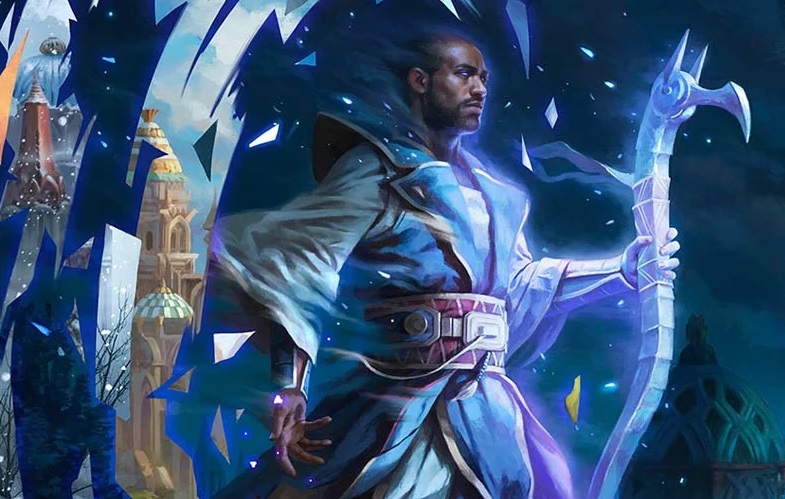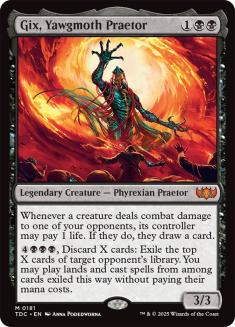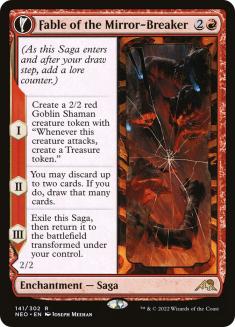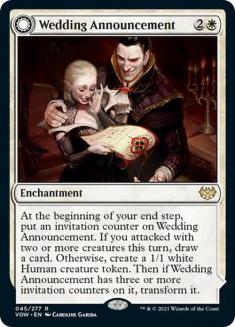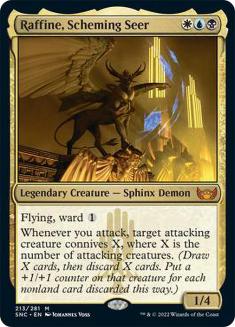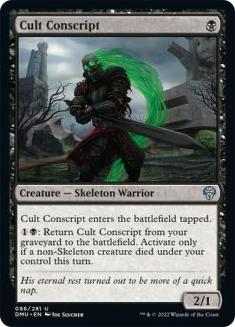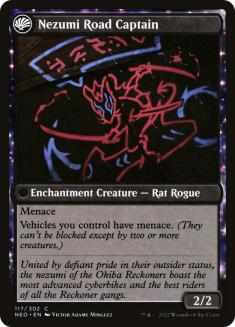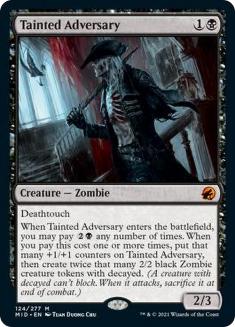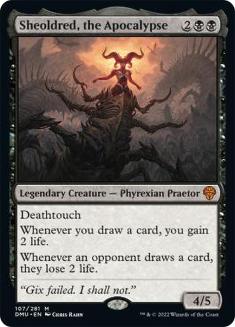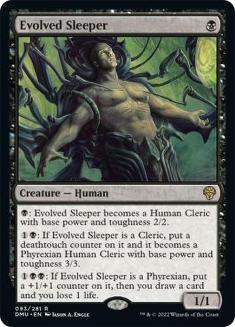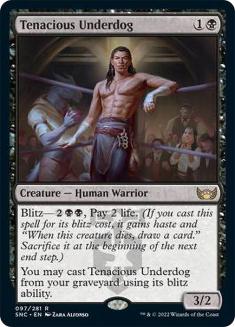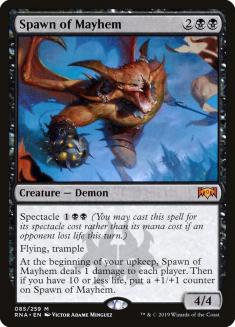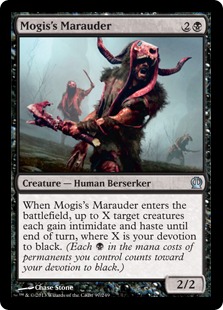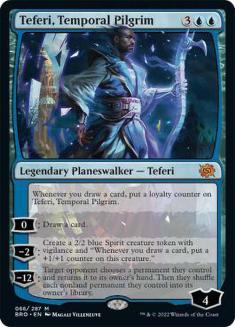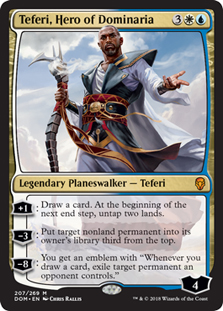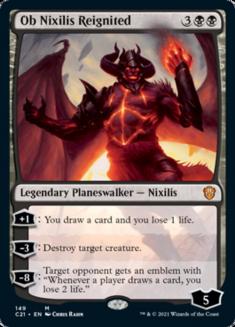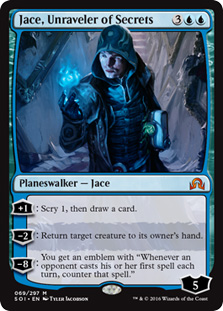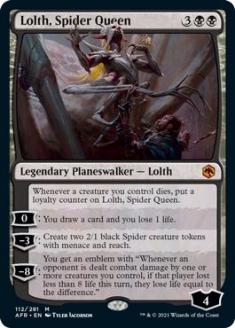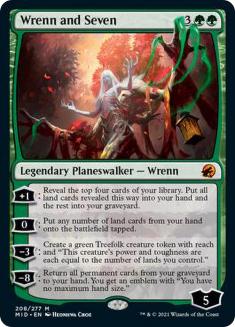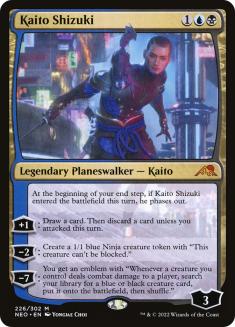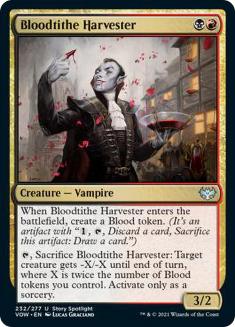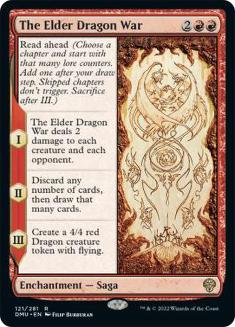In this never-ending news cycle and release schedule, it is already (and again) time for preview season. Some people complain about this constant barrage of new cards, but I’m not bored yet, and I hope that doesn’t change any time soon!
Getting My Kicks with Gix
Gix, Yawgmoth Praetor has obvious echoes of Edric, Spymaster of Trest – a powerful card in casual formats from Commander to Cube but not one that is allowed to flourish in Constructed formats where cards like that are playable. Following a recent trend, Gix itself has respectable stats for brawling if you can’t rely on other creatures to push damage instead. From this angle, it looks vaguely like the Ophidian variants that used to be a bigger part of Magic.
The Seven-Mana Factor
Gix also boasts a flashy seven-mana ability that can create wild swings in longer multiplayer games, but how relevant is it for Constructed? In a Standard midrange slugfest, it’s fairly realistic to reach seven mana and somehow not be out of cards, but even there you need specific conditions to go all-in on Gix.
Suppose I’m playing an Esper Midrange mirror – a likely assumption given its nice ~70% metagame share at the World Championship this weekend – and I have a redundant land and a few medium spells (let’s say a Raffine, Scheming Seer and a Wedding Announcement that’s not immediately relevant). Unless my position is so dire that I have to spin the wheel and hope for the best, I get a safer and possibly better outcome by just casting my spells or using my known mana sinks. The fact that you already have good ways to sift through cards or use your mana is part of why these decks are so dominant and why they can play such long games in the first place.
In these slower shells, Gix competes with Standard’s many marquee three-drops (many of which clog up the battlefield, making it hard to connect with the creatures Gix wants to reward) and is a shining example of how much the die roll matters, as it is much easier for Gix to get out of control on the play.
Gix in Standard
The most likely home for Gix will be an aggro deck that hopes to win the game long before either player hits seven mana.
Creatures (23)
- 3 Graveyard Trespasser
- 2 Tainted Adversary
- 4 Tenacious Underdog
- 4 Evolved Sleeper
- 3 Sheoldred, the Apocalypse
- 4 Cult Conscript
- 3 Gix, Yawgmoth Praetor
Planeswalkers (3)
Lands (24)
Spells (10)

The cheap creatures in this deck all have abilities that make them ideal for curving into Gix. Cult Conscript and Tenacious Underdog promise to come back for more, letting them charge happily into similarly sized creatures, while deathtouch on Evolved Sleeper and Tainted Adversary sets up good attacks no matter how big their blockers are.
Sheoldred, the Apocalypse is one of the best cards in all of Standard, let alone in black, and it is the ideal curve-topper for a deck like this. Netting life rather than losing life with Gix triggers is appealing, but assumes a lot is going right – that you can resolve and protect both of your legends and also have a cheap creature that can connect. More importantly, Sheoldred’s life loss adds up quickly in an aggressive deck that can deal those fifteen points but sometimes has trouble finishing the job.
Gix in Pioneer
A similar shell was once the best deck in Pioneer:
Creatures (28)
- 4 Mogis's Marauder
- 4 Bloodsoaked Champion
- 2 Gifted Aetherborn
- 4 Knight of the Ebon Legion
- 3 Rankle, Master of Pranks
- 4 Tenacious Underdog
- 4 Evolved Sleeper
- 3 Gix, Yawgmoth Praetor
Lands (24)
Spells (8)

Pioneer has moved past Mono-Black Aggro in recent years – you’re more likely to see a mono-coloured deck in literally any other colour – but a recent influx of new tools threatens to put it back on the map. Evolved Sleeper is another strong one-drop mana sink to complement Knight of the Ebon Legion as a card you don’t want to block in the face of open mana. Tenacious Underdog mirrors Scrapheap Scrounger as a hard-hitting but resilient two-drop that lets you reload quickly against removal.
The best comparison for Gix might be Spawn of Mayhem, a three-drop that relies on something cheaper attacking successfully. In the games where Gix is at its best, Spawn is usually still effective, but Spawn can win games where the ground is stalled and Gix isn’t getting you anywhere. It may be that Gix’s ultimate role in Mono-Black Aggro is to remind people that the archetype exists – but it’s certainly worth a try.
Mogis’s Marauder hasn’t been seen in Mono-Black Aggro since the early Pioneer days, but I think the time is ripe for its return. It’s an excellent one-two punch with Gix, letting you refill your hand and dig for the lethal follow-up Marauder, and it serves a similar role to Brave the Elements in Mono-White Humans in letting you make an all-out attack on a clogged battlefield against other creature decks.
Another Teferi
We also have another Teferi planeswalker to sink our teeth into. Previous members of that family have set the bar high. Can this one measure up?
The Five-Mana Planeswalker Template
In some ways this Teferi is an intriguing new twist on a familiar template.
You can expect a five-mana planeswalker to draw a card every turn; if it gains more than one loyalty in the process or gives you anything else too, that’s just a bonus. The unique thing about this Teferi is that drawing a card – whatever the source – has an appealing tie-in with its other abilities.
Planeswalkers often provide their own bodyguards by creating tokens. Sometimes this is ‘free,’ sometimes it drains most of their loyalty – and the strength of that token scales accordingly. The ultimately disappointing Wrenn and Seven is actually a good reference point for this new Teferi. It can ‘draw’ multiple cards while gaining loyalty and can create a token that dwarfs anything else on the battlefield. This wasn’t enough to secure a spot in Standard – can we expect more from Teferi?
The Token Pattern
Even though Wrenn’s Treefolk token was much better at defending it or taking over the battlefield, it was more obliged to do this – if the token died, Wrenn would quickly follow. If Wrenn did stick around, it would take several turns before it could add something more to the battlefield. Teferi offers what in some ways is a much scarier play pattern:
- Cast Teferi, -2 creating a token (Teferi on 2 loyalty, 2/2 token)
- Next turn, you draw for your turn and can now -2 to create another token (Teferi on one loyalty, 3/3 token, 2/2 token)
If you have another way to draw cards immediately, you now have two serious threats and Teferi is ready to create yet another (or to just keep drawing cards, boosting those tokens further!). Most planeswalkers with this template offer a tradeoff between the planeswalker’s power and the power of the threat it leaves behind. Teferi tells you that you can have it all.
Card Draw and Teferi
These lines become even stronger if you have other ways to draw cards, and when you start searching for them, you find them wherever you look. These are just a few examples already found in top-tier Standard decks – when you build with Teferi in mind, a lot of other cards start to look more appealing. Consider, Faithful Mending, and Tainted Indulgence stand out as generally playable card filtering. The Brothers’ War is an artifact-heavy set; what if Tezzeret, Betrayer of Flesh finally gets to enter the fray?
I don’t expect this Teferi to reach beyond Standard – not least because Teferi, Hero of Dominaria has tenure in control decks in Pioneer – but I can imagine Teferi being a significant player in Standard in just a few weeks with the right supporting cast.

